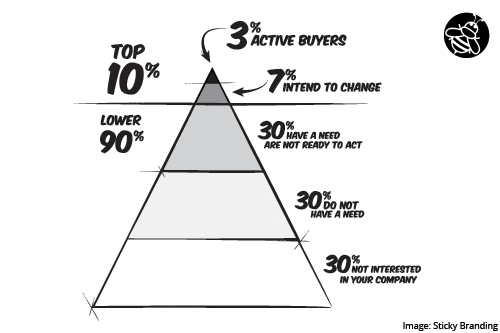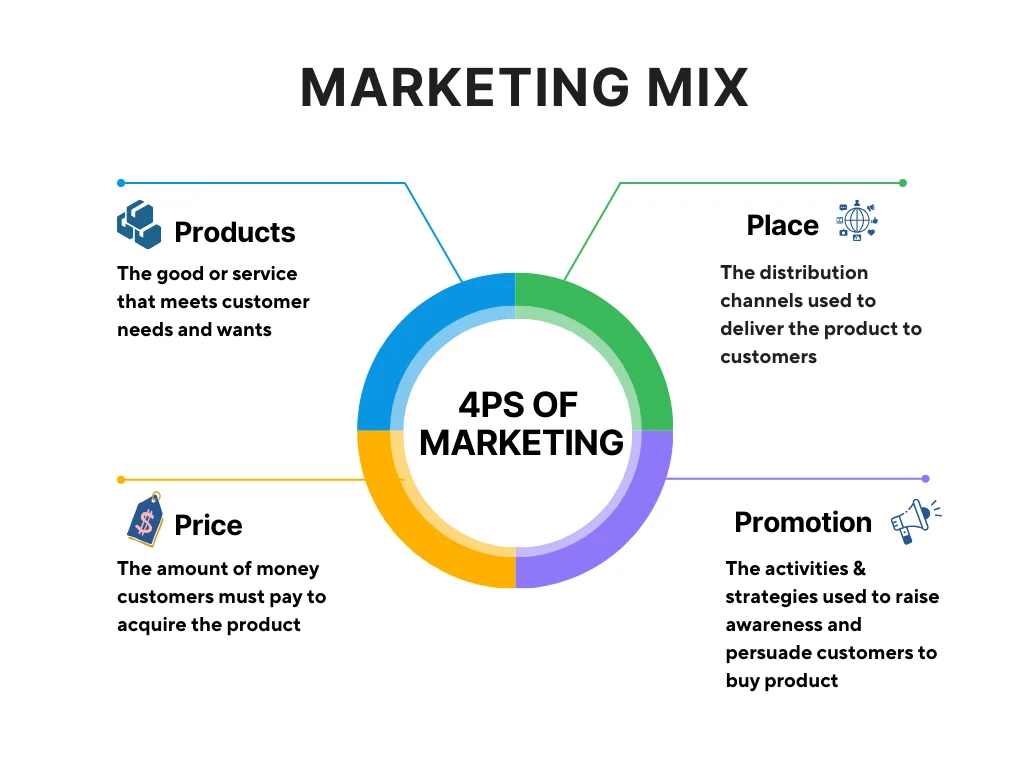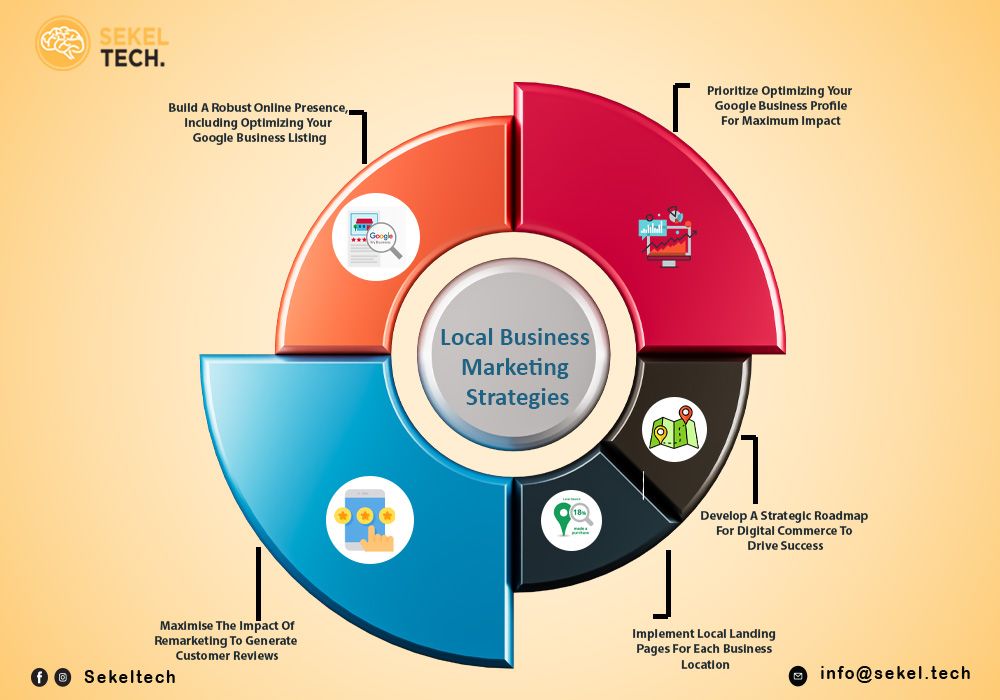Local marketing is a powerful strategy for businesses aiming to connect with their immediate community and build a loyal customer base. By focusing on the unique needs and preferences of local audiences, companies can create targeted campaigns that resonate deeply and drive engagement. From leveraging social media platforms to hosting community events, there are countless ways to make a meaningful impact in your area. This article explores innovative local marketing ideas designed to help businesses stand out, foster relationships, and grow within their neighborhoods. Whether you're a small business owner or a marketer, these strategies can help you tap into the potential of your local market.
Effective Local Marketing Ideas to Boost Your Business
Local marketing is a powerful strategy for businesses aiming to connect with their community and attract nearby customers. By focusing on localized strategies, businesses can build stronger relationships, increase brand visibility, and drive foot traffic. Below are some actionable ideas to help you succeed in local marketing.
See Also What Are Some of Your Favorite Marketing Case Studies?
What Are Some of Your Favorite Marketing Case Studies?1. Leverage Local SEO for Better Visibility
Local SEO (Search Engine Optimization) is essential for businesses that want to appear in local search results. Optimize your website with location-based keywords, create a Google My Business profile, and ensure your NAP (Name, Address, Phone Number) information is consistent across all platforms. This will help your business rank higher in local searches and attract nearby customers.
2. Partner with Local Influencers
Collaborating with local influencers can help you reach a wider audience within your community. Identify influencers who align with your brand and have a strong following in your area. They can promote your products or services through social media posts, blogs, or events, increasing your brand's credibility and visibility.
See Also How Facebook Ads Actually Work.
How Facebook Ads Actually Work.3. Host Community Events
Organizing or sponsoring local events is a great way to engage with your community. Whether it's a charity fundraiser, a workshop, or a seasonal festival, events create opportunities for face-to-face interactions and help build a positive brand image. Make sure to promote the event through local media and social channels.
4. Use Geotargeted Ads
Geotargeted advertising allows you to deliver ads to potential customers based on their location. Platforms like Facebook and Google Ads offer geotargeting features that let you focus on specific neighborhoods or cities. This ensures your marketing efforts are directed at the right audience, increasing the chances of conversions.
See Also Marketing a Funeral Home – a Delicate Form of Brand Building.
Marketing a Funeral Home – a Delicate Form of Brand Building.5. Collaborate with Other Local Businesses
Teaming up with other local businesses can be mutually beneficial. Consider cross-promotions, joint events, or bundled offers that appeal to your shared customer base. For example, a coffee shop could partner with a nearby bookstore to offer discounts to customers who visit both establishments.
| Strategy | Key Benefit |
|---|---|
| Local SEO | Improves visibility in local search results |
| Local Influencers | Builds credibility and expands reach |
| Community Events | Enhances brand image and engagement |
| Geotargeted Ads | Targets specific local audiences |
| Business Collaborations | Increases customer base through partnerships |
What are examples of local marketing?

 How to Get Leads for a Carpentry Company?
How to Get Leads for a Carpentry Company?What is Local Marketing?
Local marketing refers to strategies and tactics businesses use to target customers within a specific geographic area. It focuses on building relationships with the local community and tailoring campaigns to meet the needs of nearby customers. Examples include:
- Local SEO: Optimizing a business's online presence to appear in local search results.
- Community Events: Sponsoring or participating in local events to increase brand visibility.
- Geotargeted Ads: Running ads that specifically target users in a particular area.
How Does Local SEO Work?
Local SEO is a critical component of local marketing. It involves optimizing a business's website and online profiles to rank higher in local search results. Key strategies include:
See Also Marketing Lemonade: How to Get More Customers to My Stand?
Marketing Lemonade: How to Get More Customers to My Stand?- Google My Business: Creating and optimizing a Google My Business profile to appear in local searches.
- Local Keywords: Using location-specific keywords in website content and meta descriptions.
- Customer Reviews: Encouraging satisfied customers to leave positive reviews on platforms like Google and Yelp.
Why Are Community Events Effective?
Community events are a powerful way to connect with local customers and build brand loyalty. They allow businesses to engage directly with their target audience. Examples include:
- Sponsorships: Supporting local sports teams, festivals, or charity events.
- Pop-Up Shops: Setting up temporary stores or booths at local markets or fairs.
- Workshops: Hosting free or paid workshops to educate the community about your products or services.
What Are Geotargeted Ads?
Geotargeted ads are online advertisements that are shown only to users within a specific geographic area. They are highly effective for local marketing because they ensure your message reaches the right audience. Examples include:
- Social Media Ads: Running ads on platforms like Facebook or Instagram that target users in a specific city or neighborhood.
- Search Engine Ads: Using Google Ads to display your business to users searching for local services.
- Retargeting: Showing ads to users who have previously visited your website or physical store.
How Can Local Partnerships Boost Marketing?
Collaborating with other local businesses or organizations can amplify your marketing efforts. Partnerships help you tap into each other's customer base and resources. Examples include:
- Cross-Promotions: Partnering with a complementary business to offer joint discounts or promotions.
- Referral Programs: Encouraging other businesses to refer customers to you in exchange for incentives.
- Co-Hosting Events: Organizing events with other local businesses to attract a larger audience.
What is the 3-3-3 rule in marketing?

The 3-3-3 rule in marketing is a strategic framework designed to help businesses effectively communicate their value proposition to potential customers. It emphasizes clarity, simplicity, and repetition to ensure the message resonates with the audience. The rule is divided into three key components: 3 seconds, 3 minutes, and 3 hours, each representing a critical stage in capturing and maintaining the customer's attention.
What is the 3-Second Rule in Marketing?
The 3-second rule focuses on grabbing the audience's attention within the first three seconds of interaction. This is crucial because modern consumers have short attention spans and are often overwhelmed with information. To succeed in this stage:
- Use eye-catching visuals such as bold colors, striking images, or engaging videos.
- Craft a compelling headline that immediately communicates the value or benefit.
- Simplify the message to ensure it is easily digestible and memorable.
What is the 3-Minute Rule in Marketing?
The 3-minute rule aims to deepen the audience's engagement by providing more detailed information within the first three minutes. This stage is about building interest and trust. Key strategies include:
- Tell a story that connects emotionally with the audience and highlights the problem your product or service solves.
- Provide clear and concise details about the features, benefits, and unique selling points.
- Include social proof such as testimonials, reviews, or case studies to establish credibility.
What is the 3-Hour Rule in Marketing?
The 3-hour rule focuses on maintaining the customer's interest and encouraging them to take action within three hours of initial engagement. This stage is critical for conversion. Effective tactics include:
- Follow up with personalized communication such as emails or messages to reinforce the message.
- Offer incentives like discounts, free trials, or exclusive content to motivate action.
- Provide clear calls-to-action (CTAs) that guide the customer on what to do next, such as signing up, purchasing, or contacting your business.
Why is the 3-3-3 Rule Important in Marketing?
The 3-3-3 rule is essential because it aligns with the way modern consumers process information and make decisions. It ensures that businesses:
- Capture attention quickly in a crowded marketplace.
- Build trust and interest through clear and engaging communication.
- Drive action by maintaining momentum and providing value at every stage.
How to Implement the 3-3-3 Rule in Your Marketing Strategy
To effectively implement the 3-3-3 rule, businesses should:
- Analyze their target audience to understand their preferences, pain points, and decision-making process.
- Create a cohesive content plan that addresses each stage of the rule with tailored messaging and visuals.
- Test and optimize campaigns to ensure they resonate with the audience and achieve desired outcomes.
What are the 4 marketing ideas?

1. Content Marketing
Content marketing is a strategic approach focused on creating and distributing valuable, relevant, and consistent content to attract and engage a target audience. This method helps build trust and establish authority in your industry. Key elements include:
- Blog posts: Regularly updated articles that provide insights, tips, or solutions to your audience's problems.
- Videos: Engaging visual content that explains complex topics or showcases your products/services.
- Infographics: Visually appealing graphics that simplify data and make it easy to understand.
Social media marketing leverages platforms like Facebook, Instagram, LinkedIn, and Twitter to promote products or services. It involves creating and sharing content tailored to each platform to increase brand awareness and drive engagement. Key strategies include:
- Paid ads: Running targeted advertisements to reach specific demographics.
- Influencer partnerships: Collaborating with influencers to amplify your brand's reach.
- Community engagement: Responding to comments, messages, and mentions to build relationships with your audience.
3. Email Marketing
Email marketing is a direct and cost-effective way to communicate with your audience. It involves sending personalized emails to nurture leads, promote offers, and maintain customer relationships. Key components include:
- Newsletters: Regular updates about your brand, industry news, or exclusive offers.
- Automated campaigns: Pre-scheduled emails triggered by specific actions, such as signing up or making a purchase.
- Segmentation: Dividing your email list into groups based on demographics, behavior, or preferences for more targeted messaging.
4. Search Engine Optimization (SEO)
SEO focuses on optimizing your website to rank higher in search engine results, driving organic traffic. It involves both on-page and off-page strategies to improve visibility. Key practices include:
- Keyword research: Identifying and targeting relevant keywords your audience is searching for.
- Quality content: Creating informative and engaging content that aligns with user intent.
- Backlink building: Acquiring links from reputable websites to boost your site's authority.
5. Influencer Marketing
Influencer marketing involves partnering with individuals who have a strong following and influence over your target audience. This strategy helps build credibility and expand your reach. Key steps include:
- Identifying the right influencers: Choosing individuals whose values align with your brand.
- Collaborating on campaigns: Working together to create authentic content that resonates with their audience.
- Tracking performance: Measuring the impact of influencer campaigns through metrics like engagement and conversions.
How to target local customers?
Understanding Your Local Market
To effectively target local customers, it is crucial to understand the demographics, preferences, and behaviors of your local market. Conducting market research can provide valuable insights into what your potential customers are looking for.
- Identify the age, gender, income level, and interests of your local audience.
- Analyze local competitors to understand their strengths and weaknesses.
- Survey local residents to gather direct feedback on their needs and preferences.
Optimizing for Local SEO
Local SEO is essential for businesses aiming to attract customers in their vicinity. By optimizing your online presence, you can increase your visibility in local search results.
- Claim and optimize your Google My Business listing.
- Use local keywords in your website content, meta descriptions, and tags.
- Encourage satisfied customers to leave positive reviews on local directories.
Social media platforms are powerful tools for engaging with local customers. By creating localized content and interacting with your community, you can build a loyal customer base.
- Create location-specific posts and promotions.
- Engage with local influencers to expand your reach.
- Use geo-targeted ads to reach potential customers in your area.
Participating in Community Events
Being active in your local community can significantly enhance your brand's visibility and reputation. Participating in or sponsoring local events can help you connect with potential customers.
- Sponsor local sports teams, charity events, or festivals.
- Host workshops or seminars that provide value to the community.
- Attend local networking events to build relationships with other businesses and residents.
Offering Localized Promotions
Tailoring your promotions to the local audience can drive more foot traffic and sales. Special deals and discounts for local customers can create a sense of exclusivity and urgency.
- Create limited-time offers exclusive to local residents.
- Distribute flyers or coupons in high-traffic local areas.
- Collaborate with other local businesses for joint promotions.
Frequently Asked Questions from Our Community
What are some effective local marketing ideas for small businesses?
Small businesses can benefit greatly from local marketing strategies that focus on building relationships within the community. Some effective ideas include hosting local events or workshops, partnering with other local businesses for cross-promotions, and leveraging social media platforms to engage with the community. Additionally, creating localized content such as blog posts or videos that highlight community involvement can help establish a strong presence. Don’t forget to utilize Google My Business and other local directories to improve visibility in local search results.
Social media is a powerful tool for local marketing because it allows businesses to connect directly with their community. Start by creating profiles on platforms like Facebook, Instagram, and Twitter, and ensure your business information is up-to-date. Use geotags and local hashtags to reach nearby customers. Share content that resonates with your local audience, such as behind-the-scenes looks, customer testimonials, or posts about community events. Running targeted ads on social media can also help you reach specific demographics in your area.
What role does SEO play in local marketing?
SEO (Search Engine Optimization) is crucial for local marketing because it helps your business appear in local search results. Focus on optimizing your website with local keywords, such as your city or neighborhood, and ensure your Google My Business profile is complete and accurate. Encourage satisfied customers to leave positive reviews, as these can boost your rankings. Additionally, creating localized content, such as blog posts about community news or events, can improve your visibility. Consistent backlinks from local websites or directories also play a significant role in improving your local SEO.
How can I measure the success of my local marketing efforts?
Measuring the success of your local marketing efforts requires tracking key metrics. Use tools like Google Analytics to monitor website traffic, especially from local visitors. Check your Google My Business insights to see how many people are finding your business through local searches. Track engagement on social media platforms, such as likes, shares, and comments, to gauge community interaction. Additionally, monitor the number of calls, emails, or in-store visits generated from your campaigns. Regularly reviewing these metrics will help you refine your strategies and ensure your local marketing efforts are effective.
Leave a Reply



Articles of interest